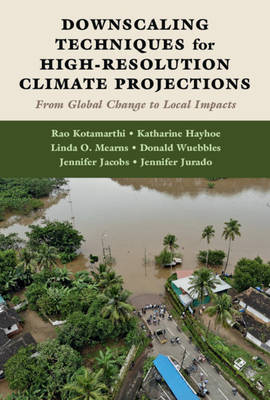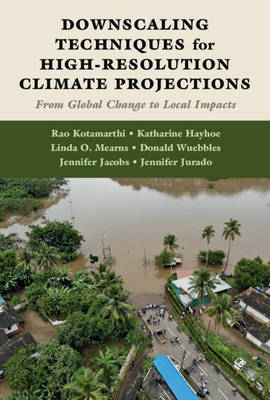
- Afhalen na 1 uur in een winkel met voorraad
- Gratis thuislevering in België vanaf € 30
- Ruim aanbod met 7 miljoen producten
- Afhalen na 1 uur in een winkel met voorraad
- Gratis thuislevering in België vanaf € 30
- Ruim aanbod met 7 miljoen producten
Zoeken
Downscaling Techniques for High-Resolution Climate Projections
From Global Change to Local Impacts
Rao Kotamarthi, Katharine Hayhoe, Linda O Mearns, Donald Wuebbles, Jennifer Jacobs, Jennifer Jurado
Hardcover | Engels
€ 109,95
+ 219 punten
Omschrijving
Downscaling is a widely used technique for translating information from large-scale climate models to the spatial and temporal scales needed to assess local and regional climate impacts, vulnerability, risk and resilience. This book is a comprehensive guide to the downscaling techniques used for climate data. A general introduction of the science of climate modeling is followed by a discussion of techniques, models and methodologies used for producing downscaled projections, and the advantages, disadvantages and uncertainties of each. The book provides detailed information on dynamic and statistical downscaling techniques in non-technical language, as well as recommendations for selecting suitable downscaled datasets for different applications. The use of downscaled climate data in national and international assessments is also discussed using global examples. This is a practical guide for graduate students and researchers working on climate impacts and adaptation, as well as for policy makers and practitioners interested in climate risk and resilience.
Specificaties
Betrokkenen
- Auteur(s):
- Uitgeverij:
Inhoud
- Aantal bladzijden:
- 210
- Taal:
- Engels
Eigenschappen
- Productcode (EAN):
- 9781108473750
- Verschijningsdatum:
- 11/02/2021
- Uitvoering:
- Hardcover
- Formaat:
- Genaaid
- Afmetingen:
- 196 mm x 249 mm
- Gewicht:
- 498 g

Alleen bij Standaard Boekhandel
+ 219 punten op je klantenkaart van Standaard Boekhandel
Beoordelingen
We publiceren alleen reviews die voldoen aan de voorwaarden voor reviews. Bekijk onze voorwaarden voor reviews.








